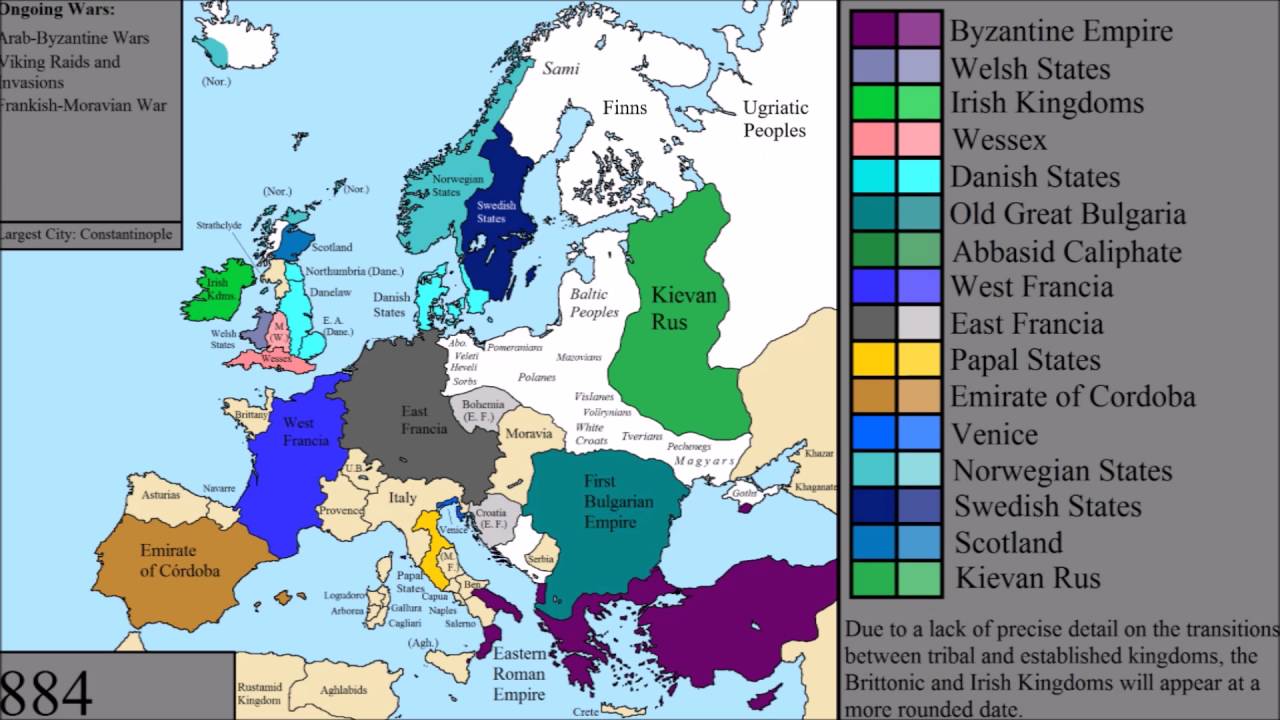By the late eleventh century, instability in the Muslim and Byzantine empires and the expansion of the Seljuk Turks had made pilgrimages to Palestine unsafe for Christians. When Byzantine envoys asked Pope Urban II for military aid against the Seljuks, the pope responded by calling for a Crusade. Crusades, or holy wars supported by the papacy against the infidel, had been waged in Spain since the Muslim invasions of the eighth century.
People responded to the pope’s call for both religious and secular motives. During the First Crusade, feudal lords established four crusader states: Edessa, Antioch, Jerusalem, and Tripoli. The Templars, Hospitalers, and Teutonic Knights, orders of military knights, were established to protect pilgrims traveling to Palestine, but as the orders grew in wealth and power, they were diverted from their original purpose.
During the Second and Third Crusades, monarchs of France, Germany, and England tried to repel Muslim advances in the East. The Fourth Crusade, which resulted in the sack of Constantinople, and other later Crusades showed how far the crusaders had strayed from the original crusading spirit.
Increased trade and travel during the Crusades resulted in the introduction of new products, ideas, and methods of finance. The Crusades also helped foster the explorations of the fourteenth and fifteenth centuries. The failure of the Crusades, however, meant the closing of the eastern Mediterranean to western Europe.
The Byzantine Empire had been in decline even before crusaders looted its palaces and churches in 1204. Official corruption had contributed to economic and social decay. Under the Latin emperors, the Byzantine Empire was divided into feudal states, but in 1261, the Greeks of Nicaea ousted the Latin emperors from Constantinople.
Rival claims to the throne, social unrest, and religious controversy led to further decay in the Empire. Thus weakened, the Byzantine Empire could not withstand the advance of the Ottoman Turks in the fourteenth century. In 1453, even the supposedly impregnable city of Constantinople fell to the invaders and was renamed Istanbul.
Ottoman rulers were generally tolerant of other religions, including Christianity. They organized their state based on a strong ruling class that included men of the emperor, men of the sword, men of the pen, and the sages. The Turks expanded their empire into Africa, Persia, and Europe. Twice, Ottoman armies besieged Vienna, but each time, they were turned back. By the seventeenth century, however, the Ottoman Empire entered a long decline.
In the thirteenth century, Genghis Khan and his successors invaded Russia. For two hundred vears, Tatars collected tribute from the Russians although they allowed Russian princes to rule themselves. In the fourteenth and fifteenth centuries the princes of Moscow challenged Tatar rule and eventually, with the support of the church, established an absolute autocratic state.
Historians have debated the impact of Tatar rule on Russia, which resulted in Russia’s falling behind the West. Not until the seventeenth century, after the accession of Michael Romanov, was Russia exposed to Western ideas and learning. During this period Russia expanded eastward to the Urals and into Siberia, south toward the Caucasus and Black Sea, north toward the Baltic Sea, and westward into territory ruled by Poland.

